Mastering PvE in Diablo 4 involves understanding your class, optimizing your build, and adapting to various in-game challenges. Whether you're delving into the darkest dungeons or facing off against the mightiest world bosses, strategic gameplay, and thorough preparation will lead to success. Remember, Diablo 4's PvE content is designed to be dynamic, so staying adaptable and continuously refining your approach is key to overcoming the hordes of hell.
Understanding PvE in Diablo 4

PvE Operations Guide for Diablo 4: Understanding PvE in Diablo 4, Image via: Blizzard Entertainment
•Campaign: The main story mode where you'll encounter a mix of quests, dungeons, and bosses. Focus on completing quests for gear and experience.
Endgame Activities:
•Nightmare Dungeons: Scalable difficulty dungeons that offer better loot and challenges.
•World Bosses: Appear in the open world, requiring strategy and sometimes group play.
•Helltides: Regions with increased difficulty and unique events for better loot.
•The Pit: A rogue-like dungeon with permadeath mechanics for high-risk, high-reward gameplay.
Class and Build Selection

PvE Operations Guide for Diablo 4: Class and Build Selection, Image via: Blizzard Entertainment
•Class Tier List: While Sorcerer has been noted for high viability in Season 5, especially with builds like Chain Lightning and Blizzard, every class has its strengths. Sorcerers might excel in burst damage, but Rogues offer versatility with builds like Barrage for leveling and endgame.
Builds for Endgame:
•Sorcerer: Focus on Chain Lightning or Blizzard for crowd control and damage. Ensure you have high resource generation or cost reduction for sustained combat.
•Rogue: Barrage or Twisting Blades builds are popular. Utilize Vulnerable debuffs for increased damage output.
•Other Classes: Druid's Landslide or Barbarian's Whirlwind can be effective for melee-focused PvE, while Necromancer excels in summoning and curse-based gameplay.
Gear and Progression
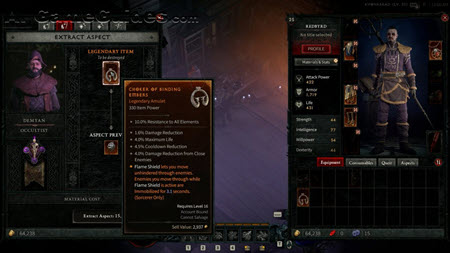
PvE Operations Guide for Diablo 4: Gear and Progression, Image via: Blizzard Entertainment
•Itemization: Look for gear with stats that enhance your build's core mechanics. For Sorcerers, this might mean focusing on Critical Strike, Cooldown Reduction, or Resource Cost Reduction.
•Aspects and Uniques: Aspects like Glacial Aspect for Sorcerers or Mangler's Aspect for Rogues can significantly boost your build's effectiveness. Unique items that synergize with your skills are also crucial.
•Crafting: Use the crafting system to temper your gear with affixes that complement your playstyle. Masterworking items for focused stats can be game-changing.
Strategies for PvE Success 
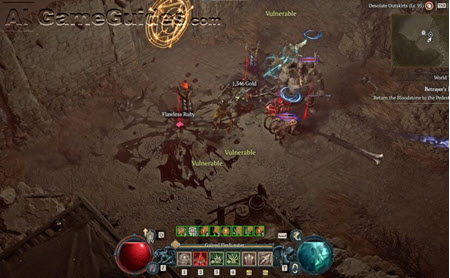
PvE Operations Guide for Diablo 4: Strategies for PvE Success, Image via: Blizzard Entertainment
•Resource Management: Especially for classes like Sorcerer, managing your resource (Mana) is key. Skills that regenerate resources or reduce costs are vital.
•Defensive Play: Even in PvE, survival is crucial. Balance your gear and skills between offense and defense. For Sorcerers, this might mean investing in Frost Nova for crowd control or Ice Armor for damage reduction.
•Group Play: While Diablo 4 can be soloed, group play can make certain activities like World Bosses or high-tier Nightmare Dungeons more manageable. Coordinate skills for maximum efficiency.
•Seasonal Content: Engage with seasonal mechanics like Infernal Hordes for additional challenges and rewards. Tailor your build or gear choices to maximize seasonal benefits.
Adaptability in PvE 

PvE Operations Guide for Diablo 4: Adaptability in PvE, Image via: Blizzard Entertainment
•Exploration: Don't rush through zones. Explore for hidden caches, events, and to uncover more of the map for Renown points which boost your character's stats.
•Skill Rotation: Understand and optimize your skill rotation for different scenarios. For instance, use mobility skills to reposition during fights against world bosses or in dungeons with lots of area damage.
•Environmental Awareness: Use the environment to your advantage. Lure enemies into choke points, use explosive barrels, or avoid traps set by enemies.
•Enemy Affixes: In higher difficulty levels, enemies come with various affixes. Learn what each does:
•Shielding: Enemies have shields; prioritize breaking these quickly.
•Mortar: Watch for incoming projectiles and move out of the way.
•Frozen: Avoid standing in ice patches or break free quickly if frozen.
Dungeon Strategies 
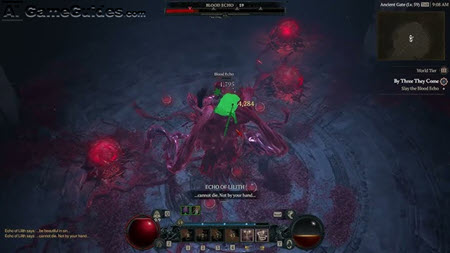
PvE Operations Guide for Diablo 4: Dungeon Strategies, Image via: Blizzard Entertainment
Nightmare Dungeons:
•Glyphs: Use Glyphs to enhance your abilities further. Choose Glyphs that synergize with your build for maximum effect.
•Pacing: Don't rush. Clear methodically to avoid pulling too many elites at once, which can be overwhelming.
•Key Dungeons: These are special dungeons that, when completed, allow you to upgrade your Glyphs. Plan your approach to these as they are tougher but yield better rewards.
World Events and Bosses

PvE Operations Guide for Diablo 4: World Events and Bosses, Image via: Blizzard Entertainment
•World Events: Participate in these for loot and experience. They often require you to defend against waves of enemies or defeat a mini-boss.
World Bosses:
•Preparation: Before engaging, ensure your potions are stocked, and your gear is in good shape.
•Team Coordination: If in a group, coordinate roles. Some players might focus on adds while others attack the boss.
Seasonal Journey and Challenges
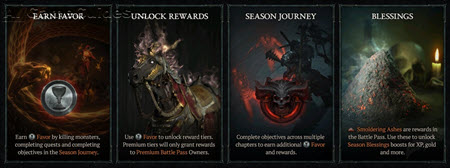
PvE Operations Guide for Diablo 4: Seasonal Journey and Challenges, Image via: Blizzard Entertainment
•Seasonal Objectives: Each season comes with a set of objectives that provide substantial rewards. Completing these can significantly boost your character's power through gear, experience, and seasonal blessings.
•Seasonal Mechanics: Engage with unique seasonal mechanics like the aforementioned Infernal Hordes. These can alter how you approach combat or exploration, offering new strategies or requiring specific builds.
Endgame Progression

PvE Operations Guide for Diablo 4: Endgame Progression, Image via: Blizzard Entertainment
•Paragon Boards: After hitting level 50, focus on your Paragon Board. Tailor your path to enhance your build's strengths or cover its weaknesses.
•World Tiers: Increase the World Tier for tougher enemies and better loot. Each tier requires you to complete a capstone dungeon, which itself is a significant PvE challenge.
Survival Tips
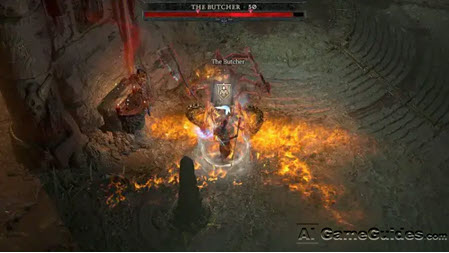
PvE Operations Guide for Diablo 4: Survival Tips, Image via: Blizzard Entertainment
•Elixirs and Incense: Use these consumables for temporary buffs. They can be crucial in tougher fights.
•Escape Mechanics: Know when to retreat. Use your dodge or escape skills wisely to reposition or escape from deadly situations.
•Health Management: Keep an eye on your health and use potions wisely. Consider skills or gear that offer life leech or health regeneration.
You may also like:
•The Story Behind Diablo 4 (IV)
•Editions and DLC Guide for Diablo 4
•System Requirements Guide for Diablo 4
•PvE Operations Guide for Diablo 4
•Basic Walkthrough to Diablo 4
•Top 10 Tips & Tricks for playing Diablo 4
